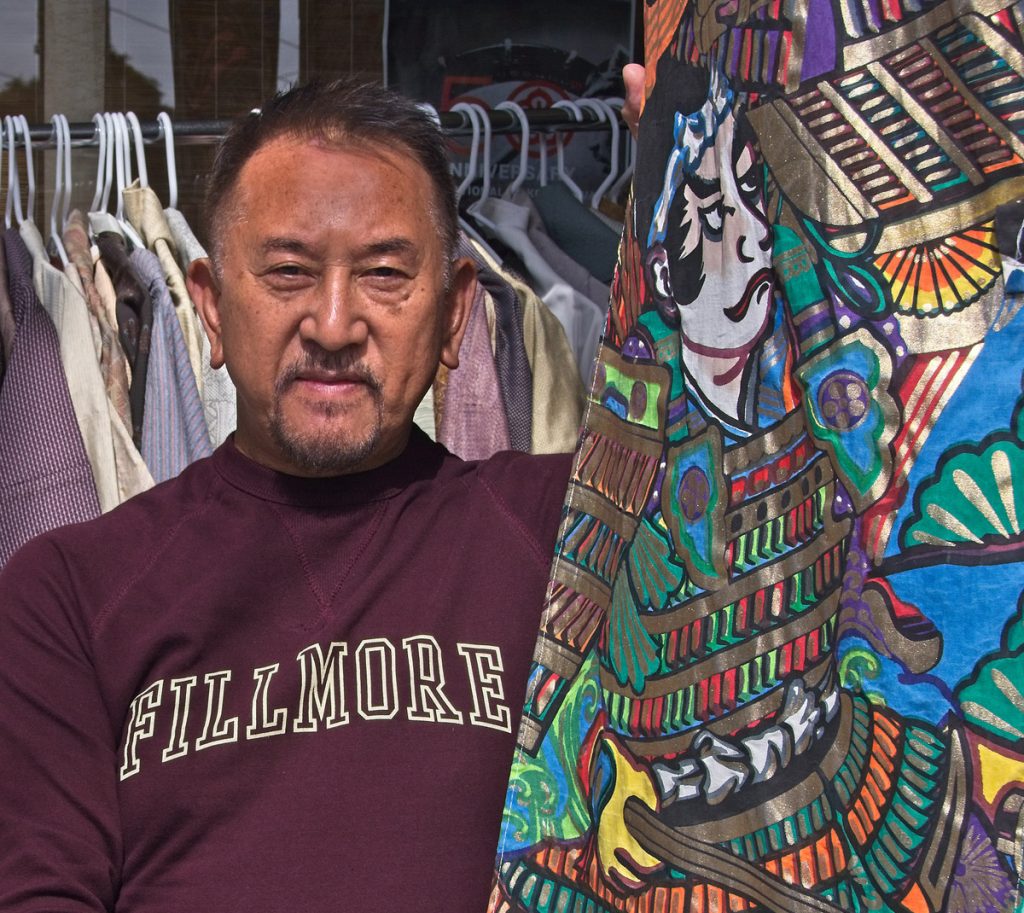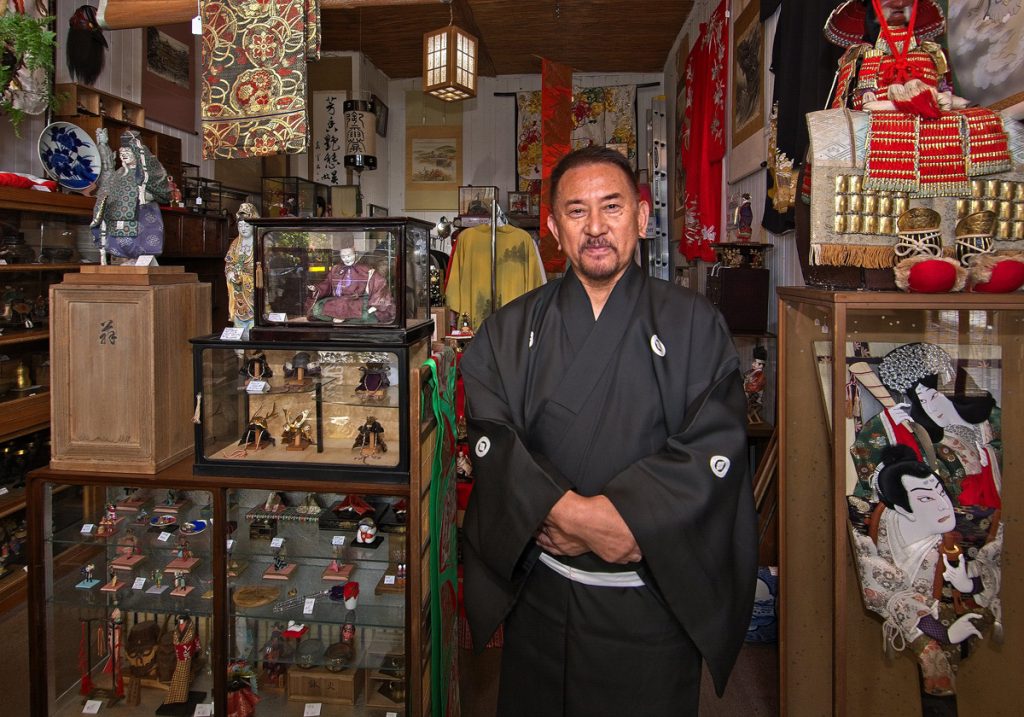By FRAN MORELAND JOHNS
“You have to say: ‘This is the end. It’s time to go home,’ ” says Jiro Nakamura, with a shy smile.
Sadly for the neighborhood, that means the end of Narumi Japanese Antiques, Nakamura’s tiny jewel box of a shop at 1902 Fillmore Street. Narumi has been the go-to place for antique Japanese dolls, imported kimonos, essentials for a proper tea ceremony and a unique collection of Japanese antiques and art — including many of Nakamura’s own stained glass creations and hand-painted works — since it opened in 1981.
Nakamura is more philosophical than sad. “When they’re old, everyone wants to go home,” he says. So he will be returning to Kyushu, Japan, where he was born and grew up, and where his brother and sister still live. He is looking forward to the move, except for one thing. “The only thing bad about Japan is the weather,” he says. “The summer is very humid, very hot. The winter is very cold. Fall is okay.”
He has already shipped his personal collection, and hopes to sell everything that’s left within the next month or two. He plans to be back in Japan for the cold of December.
His neighbors will miss him. “If you have a shop right next door to Narumi, it’s hard not to develop an addiction to kimonos and an affection for Jiro. My crew and I were always the first ones in the door after a shipment arrived,” says Victoria Dunham, whose HiHo Silver and 1906 shops are his neighbors to the north. “But the real heartache, of course, is saying goodbye to our beloved neighbor and humorous good friend.”
Nakamura’s unquestioned favorites among the treasures in his quietly elegant Fillmore Street shop are the antique Japanese dolls he has sought out on annual trips back to Japan. “The new ones are plastic,” he says, “some of them with wooden heads.” The antique dolls, he explains, have oyster shell faces. “You crush the shell, mix with water, glue, and apply the finish 20 times — 20 times!”
Narumi’s kimonos — another art form — are imported from Kyoto.
Still another art Nakamura has shared with the neighborhood is the traditional Japanese tea ceremony, which, he says, involves far more than preparing and serving tea. “The ceremony has a great history: art, directions, flower arranging,” he says. “I have been studying the tea ceremony for 25 years, and also teaching it for 25.” His classes have been held in his home, a few blocks from the shop.
Nakamura says he’ll miss a few things about San Francisco in addition to the weather. “The mix of different kinds of people, the nice restaurants and shops, the Golden Gate Bridge, the beautiful places,” he says. But “Japan has beautiful places, too.”
Going home also offers opportunity for more learning. “I plan to study more the tea ceremony. There is no end to what you can learn,” he says. “I love the techniques, the art, the flower arranging; the nice, sweet taste of green tea. And I like to wear the kimono.”
Filed under: Art & Design, Locals







